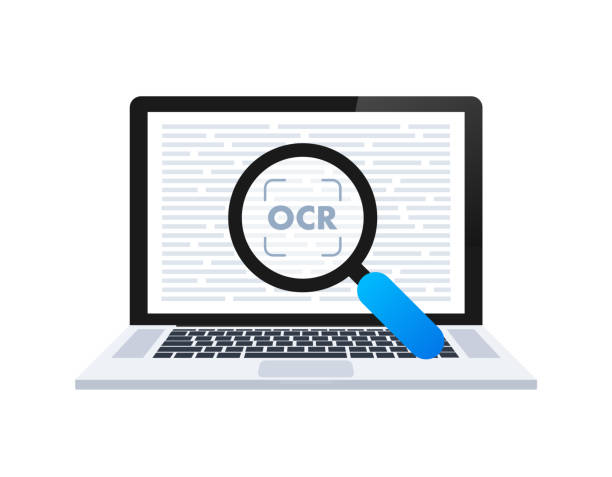In the era of data-driven operations, swiftly and accurately capturing information is paramount. Introducing the dynamic duo of Intelligent Character Recognition (ICR) and Optical Character Recognition (OCR).
These ingenious technologies reshape data capture by converting handwritten and printed text into digital formats with exceptional precision.
With studies indicating up to a 90% reduction in processing time, it’s time to unravel the transformative benefits of ICR and OCR in streamlining data capture processes.
Introduction to Data Capture Enhancement
In our data-driven world, efficiently capturing and processing information is essential for thriving businesses. The introduction of innovative methods for data capture enhancement has revolutionized industries, enabling organizations to manage and utilize data effectively.
How do these techniques work, and what advantages do they offer in today’s fast-paced digital landscape?
This exploration into the world of data capture enhancement uncovers the strategies behind seamless information gathering and utilization. By delving into these approaches, businesses can gain insights, streamline processes, and make informed decisions, ensuring they remain competitive in a data-centric era.
Understanding ICR (Intelligent Character Recognition)
Intelligent Character Recognition (ICR) is an advanced technology that converts handwritten or printed text into digital formats. It goes beyond Optical Character Recognition (OCR) by recognizing printed characters and handwritten ones. Here’s how ICR works:
- Image Capture:
ICR starts with capturing an image of the document containing handwritten or printed text.
- Preprocessing:
The captured image undergoes preprocessing, including noise reduction, image enhancement, and skew correction.
- Segmentation:
ICR software segments the document into individual characters or words. This step is crucial for distinguishing different elements.
- Feature Extraction:
Features of each character, such as strokes, curves, and angles, are extracted. This data helps differentiate between similar-looking characters.
- Pattern Recognition:
ICR uses pattern recognition algorithms and machine learning techniques to match extracted features with known characters in its database.
- Context Analysis:
The contextual analysis considers surrounding characters to improve accuracy, as certain combinations of characters are more common in languages.
- Dictionary and Language Models:
ICR employs dictionaries and language models to enhance accuracy by predicting words based on the recognized characters.
- Verification and Correction:
ICR software verifies the recognized characters and words for accuracy. If errors are detected, corrections are suggested.
- Output Generation:
The final output is a digital text version of the handwritten or printed content, which can be further processed, stored, or used as required.
ICR is beneficial for applications that involve handwritten forms, notes, or documents, such as digitizing historical records, processing handwritten surveys, and automating data entry from various sources. Its ability to accurately decipher handwritten and printed text contributes to efficient and accurate data processing in multiple industries.
Unveiling the Power of OCR (Optical Character Recognition)
- Optical Character Recognition (OCR) is a transformative technology that converts printed or handwritten text into digital data. It emerged in the mid-20th century, evolving with advancements in computing and image processing.
- OCR starts by scanning a document and capturing its image. Preprocessing enhances clarity and removes noise, followed by character segmentation, which isolates characters for recognition. OCR’s essence lies in extracting features like curves and lines and comparing them with known characters in a database through pattern recognition.
- It doesn’t just recognize characters; it understands linguistic rules and context, generating digital text. Integrated AI and machine learning expand OCR’s accuracy, handling various fonts, languages, and layouts. OCR empowers data digitization, streamlined processing, and enhanced accessibility in the digital era.
Advantages of ICR and OCR for Data Capture
ICR (Intelligent Character Recognition) and OCR (Optical Character Recognition) offer significant benefits for efficient data capture:
- Accurate Data Extraction: ICR and OCR technology ensure precise extraction of handwritten and printed text from various sources.
- Time and Cost Savings: Automating data entry reduces manual effort and associated costs.
- Enhanced Productivity: Quick processing speeds up data capture, boosting overall productivity.
- Error Reduction: Minimized manual data entry reduces the likelihood of errors.
- Multilingual Support: ICR and OCR handle diverse languages and characters effectively.
- Improved Data Accessibility: Digitized data is easily searchable and shareable.
- Data Integration: Extracted data seamlessly integrates into existing s.
- Streamlined Workflows: ICR and OCR streamline document-based processes.
Improved Accuracy and Error Reduction
Enhance accuracy and reduce errors with advanced data capture technologies like ICR and OCR.
These automated processes minimize manual entry, resulting in an impressive accuracy rate of over 98%, ensuring precise and reliable data extraction.
Real-world Applications
How do ICR and OCR revolutionize various industries?
These technologies are extensively used in finance, healthcare, retail, and more. In finance, ICR extracts data from financial documents, aiding in risk assessment. In healthcare, OCR digitizes patient records for efficient management. Retail benefits from quick data extraction for inventory control. ICR and OCR redefine data handling across sectors, boosting accuracy and efficiency.

